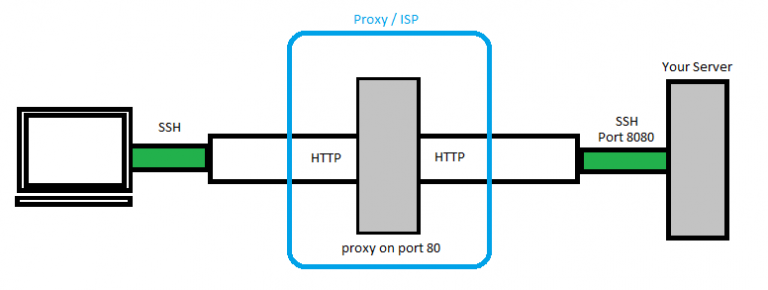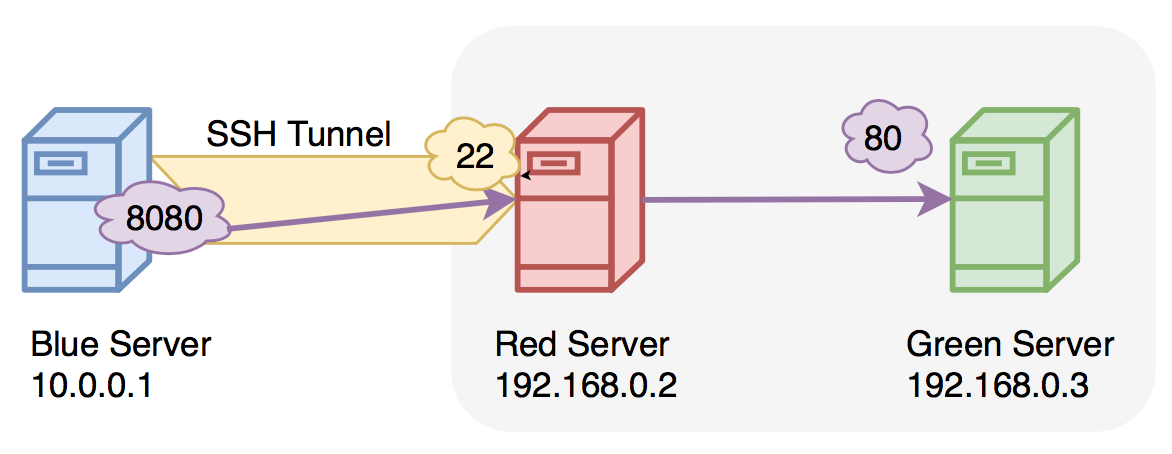



#SSH TUNNEL 80 PC#
Destination address as 198.168.10.2:22 for establishing a connection with the specific client and click on ADD at last.įirst, this will establish a connection between the remote pc and SSH server.Give new port forwarded as 7000 and connection type as local.168.1.104) via port 22 and choose option SSH >Tunnel given in the left column of the category. Use putty to connect SSH server ( 192.The only difference between dynamic tunneling and local tunneling is that dynamic tunneling requires socks proxy for tunneling all TCP traffic and local tunneling only required destination IP address. It let you establish the connection on a specific machine which is not connected from the internet. Local tunneling is a process to access a specific SSH client machine for communication.
#SSH TUNNEL 80 PASSWORD#
tsocks ssh Įnter the password and enjoy the access of SSH client. Now connect to SSH client with the help tsocks using given below command. Open the nf file for editing socks server IP and port, in our case we need to mention below two lines and then save it. Tsocks – Library for intercepting outgoing network connections and redirecting them through a SOCKS server.
#SSH TUNNEL 80 INSTALL#
Install tsocks through apt repository using the command: apt install tsocks Now connect to client machine through given below command: ssh -D 7000 So from given below image, you can perceive that now we able to connect with the client: 192.168.10.2 via port 80.ĭynamic SSH Tunneling through Kali Linux on Port 22

In your web browser “Firefox” go to option for general setting tab and open Network Proxy.Next, we need to set a network proxy for enabling socksv5 and for that follow below steps. ssh -D 7000 Įnter the user’s password for login and get access to the SSH server as shown below. Now we are employing Kali Linux for SSH tunneling and demonstrating how an attacker or Linux user can take the privilege of Tunneling and can establish an SSH connection with client systems. Click on open to establish a connection.Īwesome!! We have successfully access SSH client (raj) via port 7000ĭynamic SSH Tunneling through Kali Linux on Port 80.Give proxy hostname as 127.0.0.1 and port 7000.The open previous running window of putty choose Proxy option from the category and follow given below step: Now login into putty again and give IP of client system as Host Name 192.168.10.2 and Port 22 for SSH then click on open. Now connect to SSH server 192.168.1.104 via port 22 and then click on open when all things get set.įirst, it will connect to the SSH server as you can see we are connected with SSH server (Ignite). Give new port forwarded as 7000 and connection type as dynamic and click on ADD at last.Choose option SSH >Tunnel given in the left column of the category.Similarly now Remote PC trying to connect with Client PC ( 192.168.10.2) via port 22, since they belong to the different network, therefore, he receives network error. Here we had used putty for establishing a connection between SSH server (Ubuntu) and remote user (Windows). Remote Pc is trying to connect to SSH server ( 192.168.1.104) via port 22 and get successful login inside the server. Given below image is describing the network configuration for SSH server where it is showing two IP 192.168.1.104 and another 192.168.10.1Īnother image given below is describing network configuration for SSH client which is showing IP 192.168.10.2 To establish a connection with an SSH client (raj), remote PC will create an SSH tunnel which will connect with the local system via SSH server (Ignite). In the following image, we are trying to explain the SSH tunneling process where a remote PC is trying to connect to 192.168.10.2 which is on INTRANET of another network. SSH client (local network) holds IP 192.168.10.2 IP 192.168.1.104 connected with the remote system Here I have set my own lab which consists of three systems in the following network: Objective: To establish an SSH connection between remote PC and the local system of the different network. Because tunneling involves repackaging the traffic data into a different form, perhaps with encryption as standard, a third use is to hide the nature of the traffic that is run through the tunnels. SSH Tunnel: Tunneling is the concept to encapsulate the network protocol to another protocol here we put into SSH, so all network communication is encrypted. Tunneling is normally performed through encapsulating the private network data and protocol information inside the public network broadcast units so that the private network protocol information visible to the public network as data. Basically, tunneling is a process which allows data sharing or communication between two different networks privately.


 0 kommentar(er)
0 kommentar(er)
